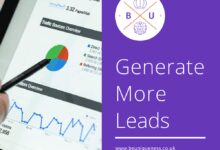Leads Bank Secrets: 7 Powerful Strategies to 10X Your Growth
Want to skyrocket your sales? The real game-changer lies in mastering your leads bank. It’s not just a list—it’s your business’s most valuable asset.
What Is a Leads Bank and Why It Matters

A leads bank is more than a simple contact list—it’s a centralized, dynamic repository of potential customers collected through various channels like websites, social media, events, and referrals. Think of it as your sales pipeline’s foundation, where every lead holds the potential to become a loyal customer.
Definition and Core Function
At its core, a leads bank stores, organizes, and manages prospect information. This includes names, contact details, behavior patterns, and engagement history. Its primary function is to streamline lead nurturing and conversion by ensuring no opportunity slips through the cracks.
- Acts as a single source of truth for all prospect data
- Enables segmentation for targeted marketing
- Supports automation in follow-up sequences
According to HubSpot, businesses that use structured lead management see up to 45% more qualified leads than those that don’t.
Evolution from Traditional to Digital Leads Bank
In the past, leads were stored in physical Rolodexes or Excel sheets. Today, digital leads banks powered by CRM systems and AI-driven analytics have transformed how companies interact with prospects. The shift has enabled real-time tracking, predictive scoring, and personalized outreach at scale.
“A well-maintained leads bank is the heartbeat of modern sales operations.” — Sales Hacker
Platforms like Salesforce and Zoho CRM now offer cloud-based leads bank solutions that integrate seamlessly with marketing and customer service tools.
How a Leads Bank Drives Business Growth
When properly utilized, a leads bank doesn’t just store data—it fuels growth. By turning cold contacts into warm prospects and eventually paying customers, it directly impacts revenue and market share.
Accelerating Sales Cycles
A well-organized leads bank allows sales teams to act quickly on high-intent leads. With access to historical interactions and behavioral data, reps can personalize outreach and shorten the time from first contact to close.
- Reduces response time to new leads by up to 70%
- Enables prioritization based on lead scoring models
- Facilitates timely follow-ups using automated workflows
For example, a study by MarketingProfs found that companies using lead scoring convert 2–3x more leads than those relying on intuition alone.
Improving Customer Acquisition Efficiency
With a centralized leads bank, marketing and sales teams can identify which channels generate the highest-quality leads. This insight allows for smarter budget allocation and campaign optimization.
- Tracks lead source performance (e.g., paid ads vs. organic search)
- Identifies high-converting audience segments
- Reduces customer acquisition cost (CAC) over time
By analyzing conversion rates across different lead sources, businesses can double down on what works and eliminate wasteful spending.
Building a High-Performance Leads Bank: Step-by-Step
Creating an effective leads bank isn’t about collecting as many names as possible—it’s about gathering the right data in the right way. Here’s how to build one that delivers results.
Step 1: Define Your Ideal Customer Profile (ICP)
Before collecting leads, you must know who you’re targeting. An Ideal Customer Profile outlines the demographics, firmographics, pain points, and buying behaviors of your most valuable prospects.
- B2B example: Mid-sized SaaS companies with 50–200 employees
- B2C example: Urban millennials interested in sustainable fashion
- Use surveys, interviews, and competitor analysis to refine your ICP
This clarity ensures your leads bank is filled with relevant, high-potential contacts—not random sign-ups.
Step 2: Choose the Right Tools and Platforms
Your leads bank is only as good as the technology behind it. Selecting the right CRM or lead management platform is critical.
- HubSpot: Best for inbound marketing and small to mid-sized businesses
- Salesforce: Ideal for enterprise-level organizations with complex sales cycles
- ActiveCampaign: Great for automation and email nurturing
Ensure your chosen platform supports API integrations, data encryption, and mobile access for seamless operations.
Step 3: Implement Multi-Channel Lead Capture
Diversify your lead sources to build a robust leads bank. Relying on a single channel limits reach and increases risk.
- Landing pages with lead magnets (e.g., free eBooks, webinars)
- Social media lead forms (Facebook, LinkedIn)
- Chatbots and live chat widgets on your website
- Offline events and trade shows with digital follow-up systems
Each channel should feed directly into your leads bank, ensuring no lead is lost in translation.
Optimizing Your Leads Bank for Maximum Conversion
Collecting leads is just the beginning. To unlock their full potential, you need to optimize your leads bank for engagement and conversion.
Lead Scoring: Prioritize What Matters
Not all leads are created equal. Lead scoring assigns values to prospects based on their behavior, demographics, and engagement level.
- Positive points for actions like downloading a whitepaper (+10), attending a demo (+25)
- Negative points for inactivity (-5 per week of no engagement)
- Thresholds trigger sales outreach (e.g., score > 50 = sales-ready)
This system ensures your sales team focuses on the hottest leads, improving close rates and reducing wasted effort.
Segmentation for Personalized Marketing
A one-size-fits-all approach fails in today’s market. Segmentation divides your leads bank into subgroups based on shared characteristics.
- Demographic: Age, location, job title
- Behavioral: Pages visited, content downloaded
- Purchase intent: Frequent website visits, cart abandonment
Personalized emails based on segmentation generate 6x higher transaction rates, according to Campaign Monitor.
Integrating Automation into Your Leads Bank
Manual follow-ups are inefficient and inconsistent. Automation transforms your leads bank into a self-sustaining growth engine.
Email Drip Campaigns That Convert
Automated email sequences nurture leads over time, delivering value at each stage of the buyer’s journey.
- Welcome series for new subscribers
- Educational content for mid-funnel leads
- Discount offers or case studies for bottom-funnel prospects
Tools like Mailchimp and Klaviyo allow you to set up behavior-triggered emails that keep your brand top-of-mind.
CRM and Marketing Tool Integration
Your leads bank should be the central hub connecting all your tools. Integration ensures data flows smoothly between systems.
- Sync CRM with email marketing platforms
- Connect web analytics (Google Analytics) to track lead behavior
- Link chatbots to update lead records in real time
This creates a unified view of each lead, enabling smarter decisions and smoother handoffs between departments.
Avoiding Common Leads Bank Mistakes
Even the best systems fail when mismanaged. Here are the most frequent pitfalls and how to avoid them.
Neglecting Data Hygiene
Outdated or inaccurate data plagues many leads banks. Duplicate entries, invalid emails, and incorrect job titles reduce campaign effectiveness.
- Conduct quarterly data audits
- Use tools like ZeroBounce to verify email addresses
- Implement double opt-in to ensure data quality from the start
Poor data quality can cost businesses up to 12% of their revenue, per Gartner.
Over-Automating the Human Touch
While automation saves time, over-reliance can make your outreach feel robotic and impersonal.
- Balance automated messages with personalized follow-ups
- Train sales reps to review lead history before calling
- Use video messages for high-value prospects
Personalization increases conversion rates by 20%, according to Salesforce Research.
Measuring the Success of Your Leads Bank
To continuously improve, you need to track performance. Key metrics reveal how well your leads bank is functioning.
Key Performance Indicators (KPIs) to Monitor
Tracking the right KPIs helps you identify strengths and weaknesses in your lead management process.
- Lead conversion rate: % of leads that become customers
- Average lead response time: Speed of initial contact
- Cost per lead: Total spend divided by number of leads acquired
- Lead-to-customer cycle time: How long it takes to close a lead
Regular reporting on these metrics enables data-driven decisions and continuous optimization.
Using Analytics to Refine Strategy
Analytics go beyond numbers—they tell a story about customer behavior and campaign effectiveness.
- Identify which content drives the most leads
- Analyze drop-off points in your funnel
- Compare performance across different lead sources
Google Data Studio and CRM-native dashboards can visualize this data, making it easier to spot trends and adjust strategy.
Future Trends in Leads Bank Management
The world of lead management is evolving fast. Staying ahead requires embracing new technologies and strategies.
AI-Powered Lead Prediction
Artificial intelligence is revolutionizing how we identify and prioritize leads. AI models analyze vast datasets to predict which leads are most likely to convert.
- Predictive lead scoring using machine learning
- Natural language processing (NLP) to analyze email sentiment
- Chatbots that qualify leads in real time
Companies like InsideSales already use AI to increase lead conversion by up to 30%.
Privacy-First Lead Collection
With GDPR, CCPA, and other regulations, privacy is no longer optional. Future leads banks must be built on consent and transparency.
- Clear opt-in mechanisms with explicit consent
- Easy unsubscribe and data deletion options
- Zero-party data collection (information willingly shared by users)
Respecting privacy builds trust, which in turn improves engagement and loyalty.
What is a leads bank?
A leads bank is a centralized database that stores and manages potential customer information, enabling businesses to nurture and convert prospects efficiently.
How do you build a leads bank?
Start by defining your ideal customer profile, choose a CRM platform, and implement multi-channel lead capture strategies like landing pages, social media, and events.
What tools are best for managing a leads bank?
Top tools include HubSpot, Salesforce, Zoho CRM, and ActiveCampaign, depending on your business size and needs.
How often should you clean your leads bank?
Conduct data hygiene audits at least quarterly to remove duplicates, update records, and verify contact information.
Can AI improve leads bank performance?
Yes, AI enhances lead scoring, predicts conversion likelihood, and automates personalized outreach, significantly boosting efficiency and results.
A powerful leads bank is no longer a luxury—it’s a necessity for sustainable growth. From defining your ideal customer to leveraging AI and automation, every step you take to optimize your leads bank directly impacts your bottom line. By avoiding common mistakes, tracking the right metrics, and staying ahead of trends, you can turn your leads bank into a predictable revenue engine. Start building, refining, and scaling your leads bank today to unlock your business’s full potential.
Further Reading:



